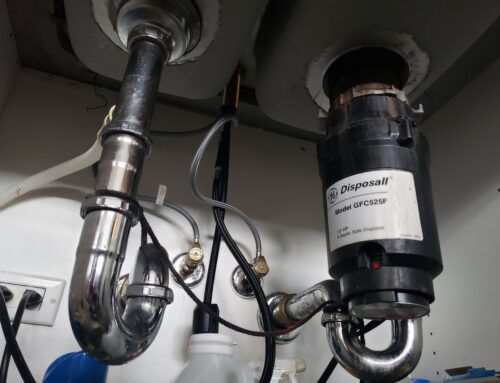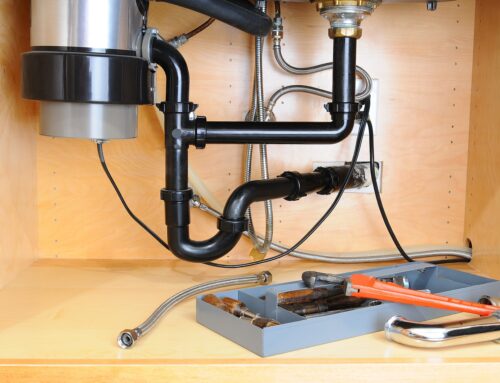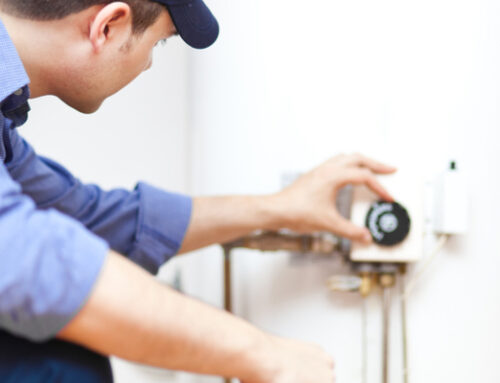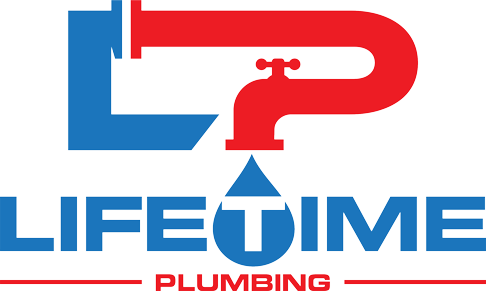Table of Contents
- 1 Benefits of Installing Backflow Prevention Devices at Home
- 2 Protecting the Clean Water Supply at Home with Backflow Prevention Devices
- 3 Benefits of Installing Backflow Prevention Devices
- 4 Understanding Different Types of Backflow Prevention Devices
- 5 The Importance of Regular Maintenance and Testing
- 6 Choosing the Right Backflow Preventer for Your Home
- 7 Benefits of Installing Backflow Prevention: Conclusion
Benefits of Installing Backflow Prevention Devices at Home
In this article, we will explore the benefits of installing backflow prevention devices in your home’s plumbing system and how they can safeguard the clean water supply from contamination, sediments, and rust particles.
Backflow prevention devices are important for keeping your home’s water supply safe. They work by stopping water from flowing in the wrong direction, which helps prevent any harmful substances from entering the water.
Having access to clean and safe water is crucial for a healthy living environment. Installing backflow prevention devices is a proactive way to protect your household’s water supply from things like sediments and rust particles that can get into the pipes.
By understanding why backflow prevention devices are necessary and how they help maintain water quality, you can make better choices to ensure that your home always has clean and safe water.
Protecting the Clean Water Supply at Home with Backflow Prevention Devices
Backflow is a critical concern as it can lead to the contamination of the drinking water supply. This occurs when non-potable water, contaminants, or other substances flow backward into the clean water supply due to a sudden change in water pressure.
Understanding the causes of backflow is essential in order to prevent it from occurring in plumbing systems:
- Back Siphonage: A drop in pressure within the plumbing system creates a vacuum that pulls water from non-potable sources back into the clean water supply.
- Back Pressure: An increase in pressure within the non-potable system can push water to flow in the opposite direction into the potable water system.
- Cross-Connections: These physical connections between potable and non-potable water supplies create potential pathways for contaminants to enter the clean water supply.
While residential properties face backflow risks due to events like burst pipes or firefighting activities, commercial properties are also susceptible due to industrial processes, irrigation systems, and fire protection systems. To mitigate these risks, homeowners and property managers must take proactive measures such as installing backflow prevention devices to safeguard their clean water supply.
By implementing these preventative measures and understanding how backflow occurs in plumbing systems, we can effectively minimize its potential risks and consequences.
The Dangers of Backflow Contamination
Plumbing systems play a crucial role in keeping our water supply safe and reliable, whether it’s in our homes or businesses. But there’s a problem that can seriously jeopardize this important function: backflow.
Backflow happens when water flows in the opposite direction within a plumbing system, potentially causing contamination and introducing harmful substances into our clean water supply. This poses a significant danger to anyone who depends on their plumbing system for safe water.
Potential Health Risks Associated with Backflow Contamination
Backflow contamination can bring various pollutants and contaminants into our water supply, creating serious health hazards for consumers like us. Here are some of the dangers it can pose:
- Chemical Contaminants: Backflow has the potential to push chemicals such as pesticides, fertilizers, cleaning agents, and even industrial waste back into our drinking water. These substances can be toxic to our health if we consume them or they come into contact with our skin.
- Microbial Contaminants: Backflow can also introduce bacteria, viruses, and other microorganisms into our water supply. This increases the risk of contracting waterborne diseases such as E.coli, giardiasis, hepatitis A, cholera, and Legionnaires’ disease.
- Sediment and Rust Particles: When there’s no proper backflow prevention system in place, sediments and rust particles can build up in our plumbing over time. These particles can change the color of our water and affect its taste and smell. Ingesting or inhaling them may cause respiratory irritation or gastrointestinal issues.
Common Waterborne Diseases Spread Through Contaminated Water
Backflow contamination can lead to the spread of various waterborne diseases that pose a threat to public health. Here are a few examples:
- Gastrointestinal Infections: If backflow contaminates our water with fecal matter, it can result in gastrointestinal infections such as diarrhea, vomiting, and abdominal cramps. These infections can be particularly dangerous for vulnerable groups like children, and individuals with weakened immune systems.
- Respiratory Infections: When backflow introduces bacteria like Legionella into our water supply, it can cause respiratory infections such as Legionnaires’ disease. This serious condition leads to severe pneumonia and flu-like symptoms.
- Hepatitis A: Backflow contamination may introduce the hepatitis A virus into our water supply, triggering outbreaks of this highly contagious liver infection. Symptoms of hepatitis A include jaundice, fatigue, and flu-like symptoms.
It’s crucial to be aware of the potential dangers posed by backflow contamination and take proactive steps to prevent it. One effective measure is installing backflow prevention devices in our plumbing systems. These devices act as barriers, stopping any unwanted reverse flow of water and safeguarding our clean water supply from contamination risks.
By taking action to prevent backflow contamination, we can ensure that ourselves, our loved ones, and our communities have access to clean and safe water.
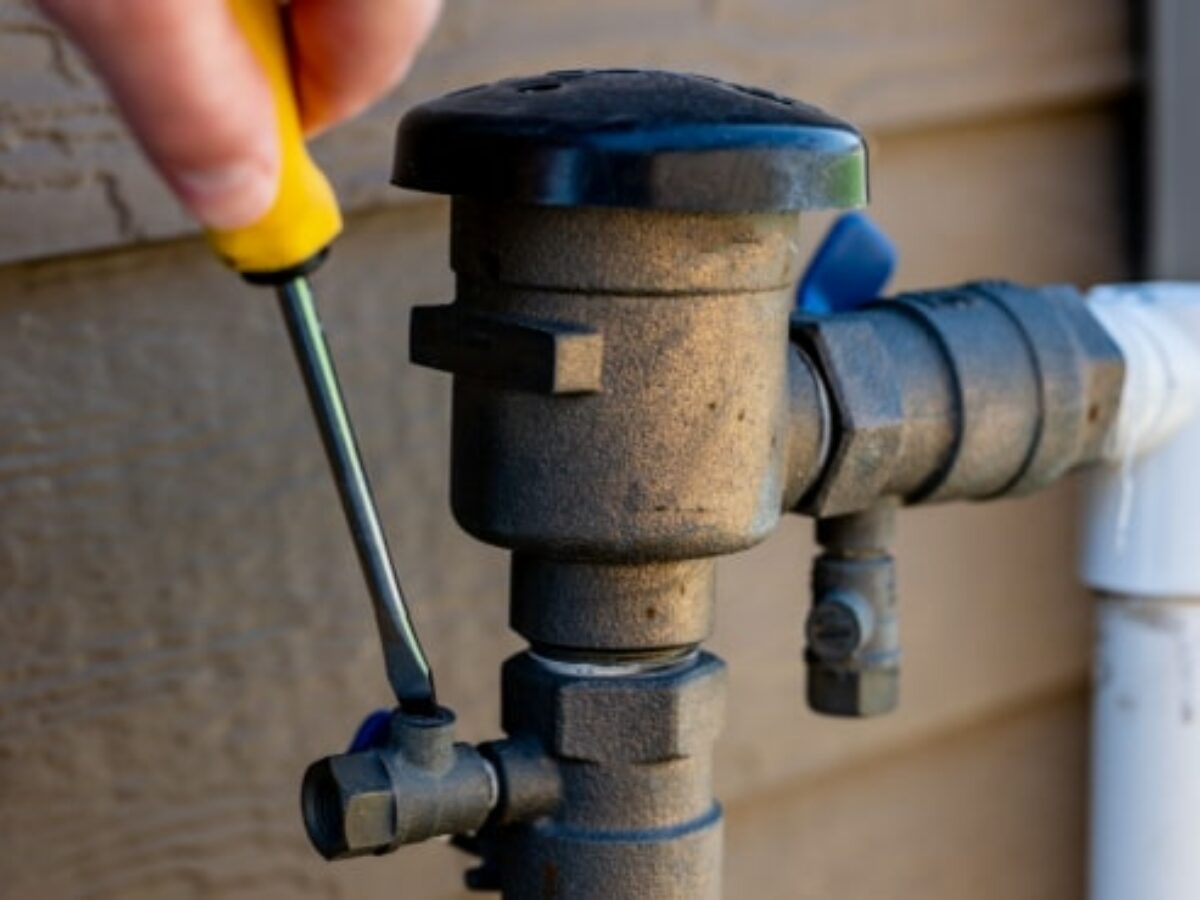
Benefits of Installing Backflow Prevention Devices
Backflow prevention devices are essential for maintaining the safety and integrity of your home’s plumbing system, especially the clean water supply. They work by preventing any unwanted flow of water from going back into the main supply, which helps prevent contamination and ensures that you always have access to clean drinking water.
How Pressure Vacuum Breakers Prevent Cross-Connections for Safe Drinking Water
One widely used type of backflow prevention device in residential plumbing systems is the pressure vacuum breaker (PVB). Its primary purpose is to prevent cross-connections between potable (drinking) water and non-potable (non-drinking) water sources, such as irrigation or sprinkler systems.
Here’s how pressure vacuum breakers work:
- Creating a Barrier: A pressure vacuum breaker consists of an inlet valve and an air inlet vent. When there is no backflow happening, the inlet valve remains closed, effectively creating a barrier between the clean water supply and potential contaminants.
- Detecting Backflow: In the event that backflow occurs due to a drop in pressure within the clean water supply, the pressure vacuum breaker detects this change and opens the inlet valve.
- Releasing Air: As the inlet valve opens, it allows air to enter through the air inlet vent. This introduction of air into the system breaks any siphoning action that could lead to backflow.
- Preventing Contamination: The influx of air prevents non-potable water from flowing back into the clean water supply, thereby preventing cross-connections and contamination.
Secure your drinking water by strategically placing pressure vacuum breakers in key areas like outdoor faucets or fire sprinkler systems. Enjoy peace of mind knowing your water is safeguarded.
Other Benefits of Backflow Prevention Devices
Apart from the primary benefit of preventing cross-connections and ensuring water safety, there are several other advantages to installing backflow prevention devices such as pressure vacuum breakers:
- Preserving Optimal Water Pressure: Backflow prevention devices help maintain proper water pressure levels throughout your plumbing system. Without these devices, a sudden drop in pressure caused by backflow can lead to reduced water pressure throughout your home. By ensuring consistent water pressure, you can enjoy efficient performance from your appliances and fixtures.
- Reducing Pipe Leaks and Damage: Backflow events put excessive stress on plumbing pipes, leading to water leaks or even pipe bursts. The constant pressure changes caused by backflow can weaken pipes over time, increasing the risk of leaks and costly repairs. By installing backflow prevention devices, you can minimize the chances of pipe damage and potential water leaks.
- Protecting Water Quality: Backflow prevention devices not only prevent cross-connections but also help maintain the quality of your drinking water. Contaminated water can carry sediments, rust particles, or chemicals that pose health risks when consumed. By installing backflow preventers, you can ensure that clean and safe water flows through your taps.
In summary, installing backflow prevention devices is not only about protecting against contamination but also about maintaining the overall health and functionality of your home’s plumbing system. These devices offer comprehensive safeguards to ensure that your family has access to clean, safe, and reliable water at all times.
Understanding Different Types of Backflow Prevention Devices
Backflow prevention devices come in various types, each serving a specific purpose and offering unique advantages. Understanding the different types of backflow preventers can help homeowners make informed decisions about which device is best suited for their plumbing system. Here’s a comprehensive guide to the most common types of backflow prevention devices:
Comprehensive Guide to Atmospheric Vacuum Breakers (AVB): How They Work and Where to Use Them
Atmospheric Vacuum Breakers (AVBs) are simple, cost-effective devices designed to prevent backflow by creating an air gap that breaks the siphon effect. They are commonly used in irrigation systems, boilers, and other low-hazard applications. AVBs are easy to install and require minimal maintenance, making them a popular choice for residential use.
Dual Check Valves: A Popular Choice for Residential Backflow Protection
Dual check valves are specifically designed for residential backflow protection. These devices feature two independently operating check valves that provide an extra layer of security against backflow. Dual check valves are suitable for low-hazard applications and are often used in garden hoses, fire sprinkler systems, and other household connections.
Exploring Reduced Pressure Zone Devices (RPZD) and Their Superiority in High-Risk Applications
Reduced Pressure Zone Devices (RPZDs) are advanced backflow preventers recommended for high-risk applications where potential health hazards exist. RPZDs consist of two check valves with a pressure-reducing chamber between them. This design effectively protects against backpressure and backsiphonage, making RPZDs ideal for commercial and industrial settings where safety is paramount.
Overview of Reduced Pressure Zone Devices (RPZD) and Their Superiority in High-Risk Applications
RPZDs offer several advantages over other types of backflow preventers, including their ability to provide the highest level of protection against backflow. These devices are equipped with test cocks that allow for easy maintenance and annual testing to ensure continued effectiveness. RPZDs are often required by local regulations in high-risk environments such as hospitals, laboratories, and chemical plants.
Understanding the different types of backflow prevention devices empowers homeowners to make informed choices when safeguarding their water supply from potential contamination. Whether it’s a simple atmospheric vacuum breaker for a residential irrigation system or a sophisticated reduced pressure zone device for industrial applications, selecting the right backflow preventer is essential for maintaining clean and safe water in any setting.
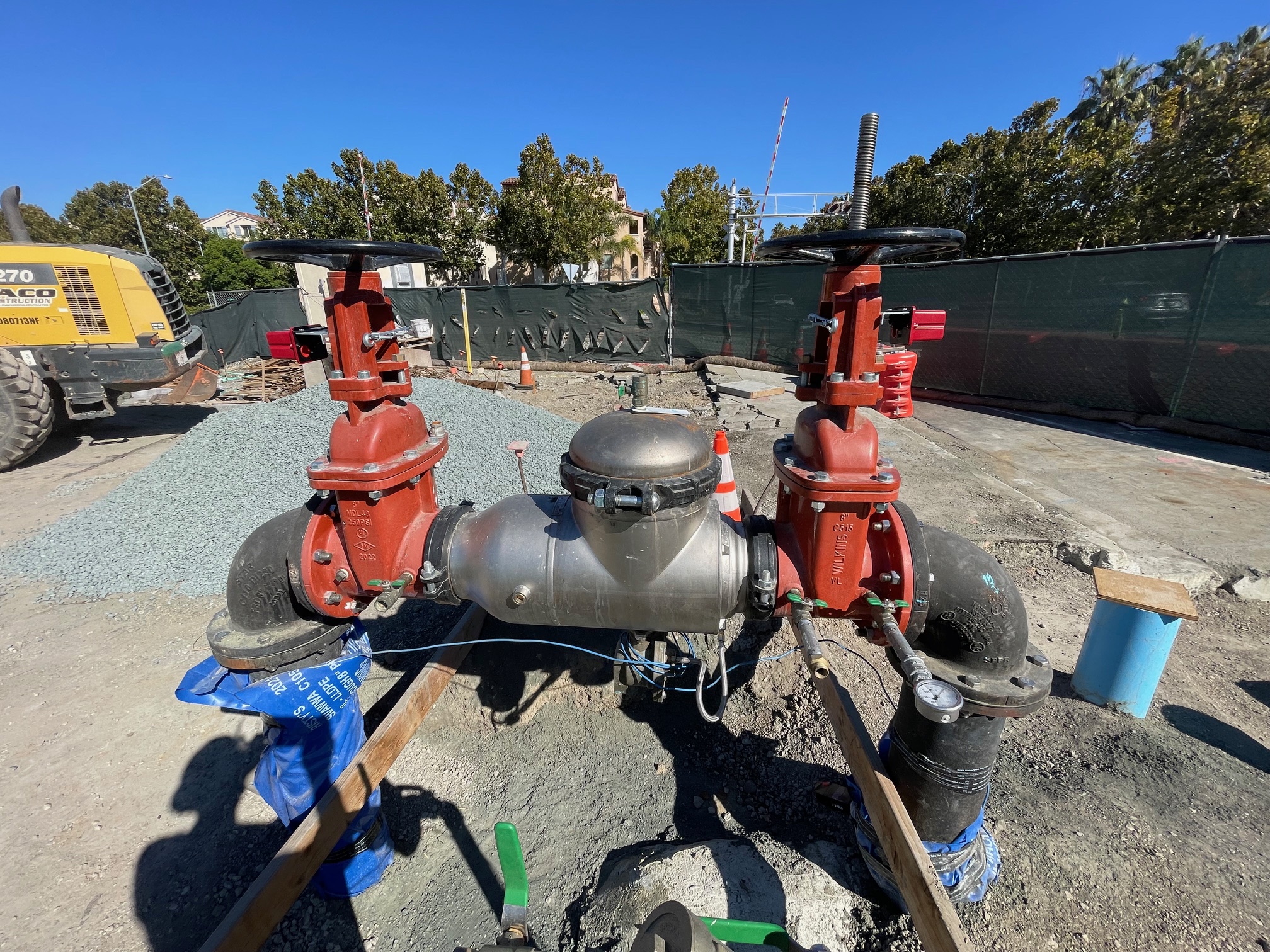
The Importance of Regular Maintenance and Testing
Regular maintenance and testing of backflow prevention devices are crucial for ensuring their effectiveness in safeguarding the clean water supply at home. Neglecting proper maintenance and testing can lead to significant consequences, ranging from legal liabilities to health hazards.
Key Takeaway: Regular Maintenance and Annual Testing are Crucial for Ensuring the Effectiveness of Backflow Prevention Measures.
To ensure that your backflow prevention devices are functioning properly and effectively protecting your water supply, it is essential to prioritize regular maintenance and annual testing. Here are some reasons why:
- Preserving Device Functionality: Over time, backflow prevention devices can experience wear and tear, which can affect their functionality. Regular maintenance allows for the detection and repair of any issues before they worsen or compromise the device’s performance. By conducting routine inspections, cleaning, and repairs, you can extend the lifespan of your backflow prevention devices.
- Identifying Potential Problems: Regular maintenance provides an opportunity to identify potential problems early on. This proactive approach helps prevent costly repairs or replacements in the future. Trained professionals can spot signs of wear, corrosion, or malfunction during inspections and address them promptly.
- Ensuring Compliance with Regulations: Many municipalities require annual testing of backflow prevention devices to comply with local regulations. Failure to comply with these regulations may result in hefty fines or penalties. Regular maintenance and testing help ensure that your devices meet the necessary standards, keeping you in compliance with regulatory requirements.
- Protecting Against Legal Liabilities: Neglected backflow prevention devices pose a legal risk for homeowners. If an incident occurs due to a malfunctioning device that results in contamination of the water supply, legal liabilities may arise. Regular maintenance and testing demonstrate your commitment to maintaining a safe water supply and protect you from potential legal consequences.
Consequences of Neglected Backflow Prevention Devices
Neglecting backflow prevention device maintenance and testing can lead to various consequences, jeopardizing the safety and quality of your water supply. Here are some potential risks:
- Contaminated Water Supply: Failing to maintain backflow prevention devices increases the likelihood of cross-connections between potable and non-potable water sources. This can lead to the contamination of your clean water supply with sediments, chemicals, or other harmful substances. Contaminated water poses serious health risks to you and your family.
- Health Hazards: Backflow contamination can result in the spread of waterborne diseases, such as Legionnaires’ disease, gastrointestinal illnesses, or respiratory infections. These health hazards can be particularly dangerous for vulnerable individuals, including children, and those with compromised immune systems.
- Pipe Damage and Leaks: When backflow prevention devices fail to function correctly, excessive pressure or water hammer effects can occur within the plumbing system. Such pressure fluctuations can damage pipes, leading to leaks or bursts. Not only does this result in costly repairs but it may also cause property damage and disrupt your daily activities.
- Insurance Coverage Limitations: Neglected backflow prevention devices may affect your insurance coverage. Insurance providers often require regular maintenance and testing as a condition for coverage against water-related incidents. Not meeting requirements can lead to coverage limitations or claim denials for backflow damage.
To avoid these potential risks and ensure the safety of your home’s water supply, it is essential to prioritize regular maintenance and annual testing of your backflow prevention devices.
Remember that professional assistance from certified plumbers is highly recommended for accurate testing and proper maintenance procedures. At Lifetime Plumbing, we have the expertise and knowledge to identify issues, perform necessary repairs or replacements. Furthermore, we provide you with peace of mind knowing that your backflow prevention devices are functioning effectively.
Why Professional Backflow Preventer Installation is Worth It
Hiring a the certified plumbers fro Lifetime Plubing for the installation of backflow prevention devices comes with several advantages:
Expertise and Experience
- Our professional plumbers in Chicago have the knowledge and experience to assess your home’s plumbing system and determine the most suitable backflow preventer for your specific needs.
- We are trained in the proper installation techniques, ensuring that the device functions effectively to safeguard your water supply.
Compliance with Regulations
- Our certified plumbers are well-versed in local building codes and regulations regarding backflow prevention. By hiring a professional, you can rest assured that your installation will meet all necessary requirements.
Proper Equipment and Tools
- We have access to specialized tools and equipment required for the precise installation of backflow preventers. This ensures that the device is correctly fitted and integrated into your plumbing system.
Long-Term Reliability
- With professional installation, you can have confidence in the long-term reliability of your backflow prevention device. Our certified plumbers can ensure that the device is securely installed, minimizing the risk of malfunctions or inefficiencies.
Peace of Mind
- By entrusting the installation to a qualified professional, you gain peace of mind knowing that your clean water supply is adequately protected against backflow contamination.
While it may be tempting to attempt DIY installation of backflow prevention devices, the expertise and assurance provided by professional plumbers make their services well worth considering. When it comes to safeguarding your home’s water supply, investing in our professional installation services can offer invaluable protection and peace of mind.
Choosing the Right Backflow Preventer for Your Home
When it comes to choosing the right backflow preventer for your home, there are several factors you should consider. These factors ensure your chosen backflow preventer is effective and legally compliant. Here are some key points to keep in mind:
Type of backflow preventer
There are different types of backflow preventers available, such as Atmospheric Vacuum Breakers (AVB), Dual Check Valves, and Reduced Pressure Zone Devices (RPZD). Each type has its own advantages and is suitable for specific applications. It’s important to understand the differences between these types and choose one that is appropriate for your home’s plumbing system.
Water pressure requirements
Consider the water pressure requirements of your home when selecting a backflow preventer. Some devices may have specific pressure range limitations, and it’s crucial to ensure that the device you choose can handle the water pressure in your plumbing system effectively.
Installation and maintenance
Consider the ease of installation and maintenance when choosing a backflow preventer. Some devices may require professional installation, while others can be easily installed by homeowners themselves. Additionally, regular maintenance is necessary to ensure the continued effectiveness of the backflow preventer.
Compliance with legal requirements
Different regions may have specific regulations regarding backflow prevention devices, like those outlined in the International Plumbing Code. It’s essential to ensure that the backflow preventer you choose complies with local legal requirements. This can help avoid any potential legal issues and ensure the safety of your water supply.
Quality and reliability
Look for reputable brands or manufacturers when selecting a backflow preventer. Quality and reliability are crucial factors in ensuring that the device will function effectively and have a longer lifespan. Reading customer reviews and seeking recommendations can help you make an informed decision.
By considering these factors, you can choose a backflow preventer that meets your specific needs and provides reliable protection for your home’s clean water supply. Remember, it’s always a good idea to consult with a professional plumber who can provide expert advice tailored to your plumbing system and local regulations.
Benefits of Installing Backflow Prevention: Conclusion
It’s important to prioritize clean and safe water in your home for the health of your family. By installing backflow prevention devices, you’re being proactive in protecting your water from potential contamination, sediments, and rust particles. This not only improves your water quality but also helps maintain good water pressure and prevents expensive pipe leaks.
Don’t wait until it’s too late – take the necessary steps to protect your home’s water supply today. Contact Lifetime Plumbing in Chicago for professional installation and maintenance of backflow prevention devices. Ensure the safety and purity of your water with the expertise and reliable services provided by our experienced team.
More Posts You May Find Interesting
Table of Contents
- 1 Benefits of Installing Backflow Prevention Devices at Home
- 2 Protecting the Clean Water Supply at Home with Backflow Prevention Devices
- 3 Benefits of Installing Backflow Prevention Devices
- 4 Understanding Different Types of Backflow Prevention Devices
- 5 The Importance of Regular Maintenance and Testing
- 6 Choosing the Right Backflow Preventer for Your Home
- 7 Benefits of Installing Backflow Prevention: Conclusion

